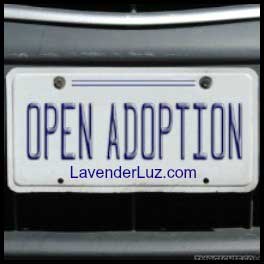Author and Blogger Lori Holden continues her series of contributions to the Adoption STAR blog by answering our questions about open adoption.

4 Keys to Getting Started with your Open Adoption Arrangement
Question: Are there some guidelines to follow when you enter into an Open Adoption arrangement?
Relationships can be challenging to navigate. The beginning of a relationship is particularly hard to navigate. And the beginning of an emotionally charged relationship hits the trifecta in level of relationship difficulty.
So is all lost when it comes to launching an open adoption relationship? How can a set of birth parents and a set of adoptive parents begin to create an arrangement that is respectful of the needs of everyone in the relationship, especially the child at the center?
Nothing is lost. In fact, the first key to starting such a relationship is to not see it as a win/lose arrangement, one in which the gains of one set of parents result in the losses of another. This requires us to move from an either/or mindset to a both/and mindset. As in any intimate relationship, if there is a loser among you, then no one truly wins. Conversely, when it comes to love for a child, the more winners you can assemble around her, the more everyone wins.
The second key is to try to normalize the relationship. Some adoptive moms harbor (consciously or subconsciously) envy for the birth mom, even if it’s mixed with gratitude. Some, like me, have an intense desire to please the birth mom, to show herself worthy of the privilege of raising her child. There can be so many emotions, even conflicting ones, swirling above the surface and below the surface of our awareness. Sometimes each meeting feels like a blind date, Groundhog Day-style, with lots of awkwardness and attempts to guess the “right” way to act with each other.
What’s required with such an emotional charge is a reframing of the relationship in a way that removes some of the emotional charge while honoring the unique and special connections that are being formed. How to do this? Consider other intimate relationships that we’ve already navigated in building our families, such as in-laws and extended family members. For example, would you invite your sister-in-law to your new child’s baptism, birthday party or other ceremony? She’s someone joined to someone you love, so chances are she’d be welcome. Your child’s birth parents are also joined to someone you love, and you might also consider inviting them. What a nice gift for your child, as well.
Should you put your child’s birth parents and their family members on your holiday letter list? Well, do you send newsy letters to Cousin Eddy, Aunt Cathy, Grandpa John? Then consider including your child’s birth parents on your list, too. You might even ask them if they’d like to be included (and follow up with a request for their addresses).
Which brings us to our third key.
Key #3 is to communicate clearly. If you don’t know whether your child’s birth parents would like to see pictures of the child with or without the rest of the family, ask — if that’s a possibility in your circumstance. If you’re in contact, a simple, “Hey, I would love to send you some photos, but I’m not sure which ones you’d most like to see. Would you like me to send some of our family as well as some of our son by himself?” Then wait for an answer without immediately filling the silence. Don’t interject your own assumptions (seeing him hurts her), and be aware of your own fears (what if she continues to think of him as hers?).
This would also be the time to set any boundaries you would set with other family members. For example, if you have preferences around posting images online, you might tell Aunt Cathy, “We’d like to be careful with our son’s online footprint, so before you post anything on Facebook, please check with us.” Which is the same thing you might say to your child’s birth parents. For this to work, it needs to stem from a uniform policy, not one that is specifically designed for birth family members.
The fourth key is to open your heart and to continue opening to the adoption experience. Openness isn’t the same as contact, and it’s not something that you do on others — you do this on yourself in order to foster it in those you are in relationship with. Opening is when you are in the moment with your own feelings and motivations, with your child, with a member of your child’s birth family. Opening is when you tune in to the emotions that are being experienced, whether they are “good” or “bad.” As your child grows into a toddler, an elementary-schooler, a teen, an adult, you want to give space and support for him to process his feelings about adoption and integrate his identity. You don’t do this once. You do it daily, sometimes hourly or minutely.
These are a quartet of guidelines I suggest for people forming open adoption relationships. What keys to success would you add to this list? Add your comment below!

~~~~~
What’s better than a good book? Discussing that book with friends. Sign up today for the upcoming AdoptLit virtual book tour, The Sound of Hope: A True Story of an Adoptee’s Quest for Her Origins.
~~~~~
Lori Holden writes regularly at LavenderLuz.com about parenting and living mindfully. Her book, The Open-Hearted Way to Open Adoption: Helping Your Child Grow Up Whole, which comes out next month, is available for pre-order on Amazon. On Twitter she’s @LavLuz and you can also find her on Facebook. She is the keynote speaker at the March 9 Parenthood for Me Gala, sponsored in part by AdoptionSTAR .
Read More about by Lori Holden and Open Adoption: Talking to Lori Holden on the Topic of Open Adoption, A Clear Definition of Open Adoption, isn’t it a spectrum?, When What I Knew about Adoption was Wrong, Open Adoption, Learn about Open, Semi-Open and Closed Adoption, One Family; Two Different Adoption Plans
